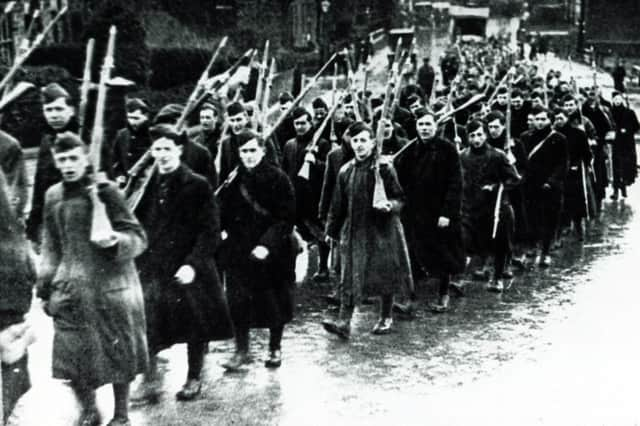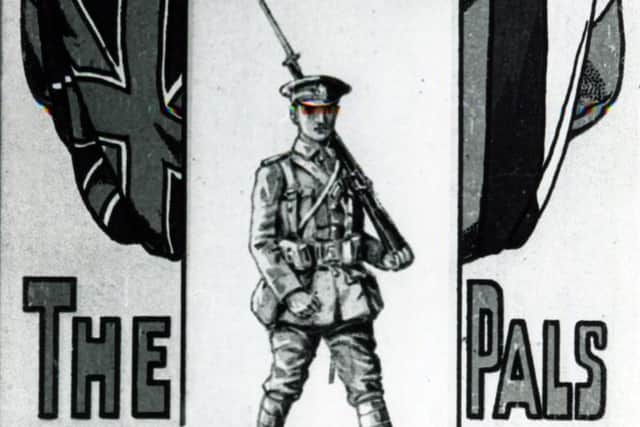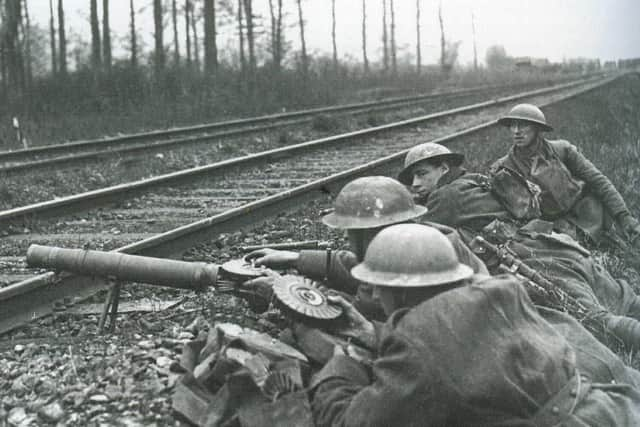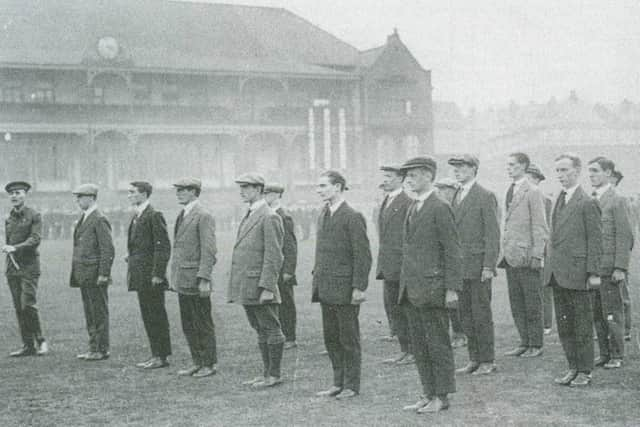City Pals battalion went from hubris to nemesis


He knew it would not be 'over by Christmas' as was popularly believed.
Rather, this war would be a protracted struggle over several years and therefore Britain had to raise new armies urgently to supplement the regular and territorial battalions that made up the BEF (British Expeditionary Force).


Advertisement
Hide AdAdvertisement
Hide AdHe found that his call to arms was answered by thousands of volunteers driven by unquestioning patriotic hubris who wanted to 'fight for their country', but who were also keen to join up if they could subsequently train and fight alongside their mates, neighbours, work colleagues, family members, and in some cases serve in a battalion whose members came from their own social class.
They were soon dubbed the Pals' battalions and the first one was a battalion of the Royal Fusiliers made up of London stockbrokers and their staffs.
The idea caught on like wild fire and Lord Derby in Liverpool quickly raised four battalions for the King's Regiment, whilst in Hull there were four battalions raised for the East Yorkshire Regiment.
By the end of August 1914 there were moves afoot to form a Pals' battalion in Sheffield and it started enrolling at the town hall on September 2.


Advertisement
Hide AdAdvertisement
Hide AdInitially the battalion was called the Sheffield University and City Special Battalion because the university claimed that it was the driving force behind the idea, but to turn the dream into reality they required the organisational and financial support of the city council and soon it was re-named the Sheffield City Battalion.
These Pals' battalions were initially outside the army's formal structure and were often raised by the city or town council and for several months were paid for by the municipal ratepayers, but the Sheffield one was even more special.
The City Battalion blatantly attempted to recruit not only university students but middle class professionals so that they could do their soldiering along 'with members of their own class'.
Their membership was widened to include clerks, a catch-all phrase for young men who saw themselves as the new middle class, wore a suit, collar and tie to work, and who might be articled to one of the professions, or just doing menial office work.


Advertisement
Hide AdAdvertisement
Hide AdThey were attached to the local regiment, The York and Lancaster Regiment, which despite its name recruited solely in Barnsley, Rotherham and Sheffield.
The wealthier suburbs of Sheffield were ripe recruiting areas for the City Battalion where many young men were disposed to join this seemingly fashionable battalion of the Regiment, rather than one of the more orthodox Territorial or Service battalions that were also recruiting in Sheffield in 1914.
Leading Liberal and Conservative councillors, many the social leaders of the city as well as the political heavyweights, along with the active enthusiasm of the Duke of Norfolk, added their encouragement to the battalion's recruiting drive, whilst the local press and the general public treated the volunteers as heroes already.
During those days of the autumn, winter and early spring of 1914-1915 the volunteers, who were mostly aged between 19 and 22, were the talk and toast of Sheffield.
Advertisement
Hide AdAdvertisement
Hide AdAt first they lived at home, wore their ordinary civilian clothes and turned up for training as if they were just going to work.
They drilled on the cricket outfield at Bramall Lane, in Norfolk Park and in the Drill Hall at Edmund Road that was their first headquarters.
In early December they moved up to Redmires camp, newly built for them by the city council, and trained during the severe winter of 1914-15 on the moors, including many route marches back into Sheffield centre and across into Derbyshire.
By now they were titled the 12th Bn (Sheffield) York and Lancaster Regt and they expected to go to France by the summer of 1915 but instead they had more training at Cannock Chase, Ripon and in the south of England.
Advertisement
Hide AdAdvertisement
Hide AdWhen they finally went overseas it was not to France, but to Egypt to defend the Suez Canal against a possible Turkish attack.
No serious attack came, so their division (the 31st Division) sailed across the Mediterranean to Marseille in March 1916 to take their place in the extended British front line that ran from the Somme to Ypres and be ready to be part of the great offensive on the Somme in July.
Their nemesis came on July 1, 1916, 22 months after their formation, on a gentle slope leading up to an undistinguished French village called Serre that a German regiment from Baden had turned into an impregnable fortress.
Trapped by unbroken wire, they were decimated by artillery and by German infantry who had survived the massive bombardment in their deep shelters.
Advertisement
Hide AdAdvertisement
Hide AdTheir casualties that day were 564, of whom 248 were killed (with 17 dying later from their wounds), out of a total attacking force of 747, and the only Sheffield soldiers who we are certain reached Serre village were the four men who were captured.
The battalion survived and reformed but now with many men from different regiments from other counties and the original volunteers became a minority within the 12th Battalion.
They were back in the trenches at Neuve Chapelle by July 24, 1916, and in late June 1917 they were involved in another major assault, this time on the Arras front, when they successfully captured German trenches at Gavrelle in a well-planned operation that caused only limited casualties.
The original volunteers thought that it was a just revenge for the disaster on the Somme almost 12 months earlier.
Advertisement
Hide AdAdvertisement
Hide AdThey continued to serve in the line on the Arras front including time forward of the Vimy Ridge, but in February 1918 the 12th Battalion was disbanded as the army amalgamated units to compensate for the great losses of 1916 and 1917.
Many survivors were now transferred to the 13th Bn Y&L, '˜The Barnsley Pals', while others went to other battalions of the regiment fighting elsewhere in France. 439 officers and men had been killed while serving with the 12th Battalion and more than a few posted to other battalions would die before the war was over.
Even before the war ended the surviving volunteers of 1914 formed the 'Twelfth Club' who met regularly up to 1939.
There was no 12th Battalion of the York and Lancaster Regiment in World War Two -- the regiment only raised ten battalions -- so there were no new members of the Twelfth Club, but even so it was reformed between 1961 and 1976 and those veterans, plus a best-selling novel and a thoroughly well-researched history, revived interest in Sheffield's special battalion by the end of the 20th century.
Advertisement
Hide AdAdvertisement
Hide Adn John Cornwell is former deputy leader of South Yorkshire County Council and former chair of Sheffield Theatres Trust.
He is one of the speakers this Sunday, November 11 at an event at Sheffield City Hall called Sheffield's Great War, where six local researchers, writers, academics, historians and enthusiasts will look at Sheffield's story during 1914-1918.
Tickets are available for £7 in advance from the City Hall box office or £8.50 on the door. For further details, visit www.sheffieldsgreatwar.co.uk